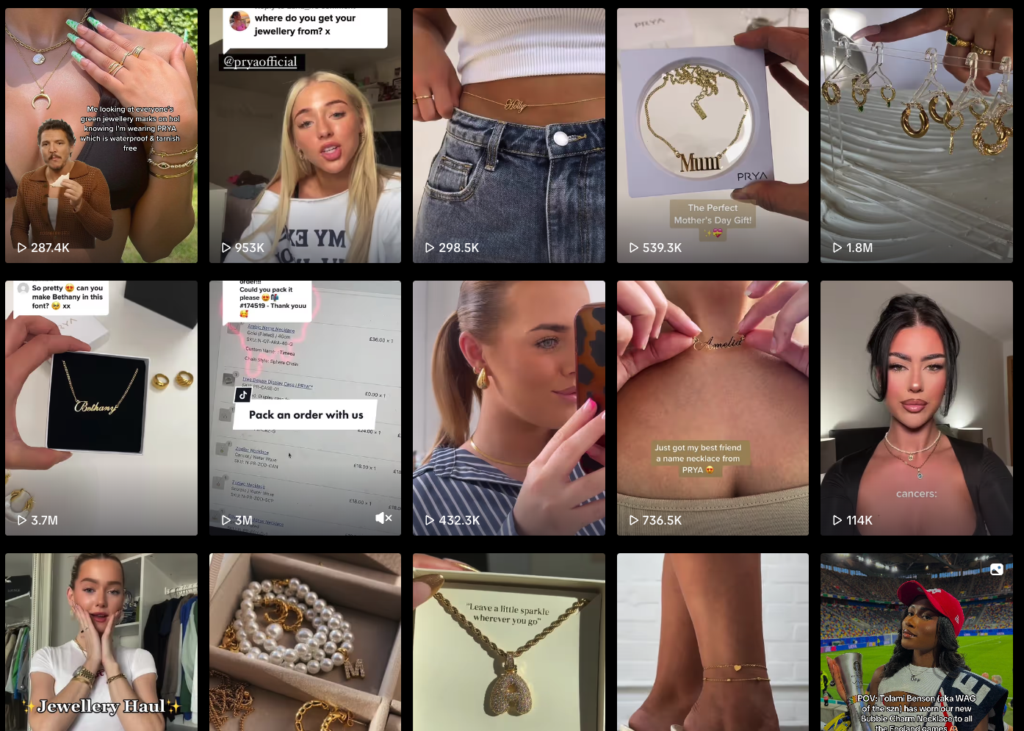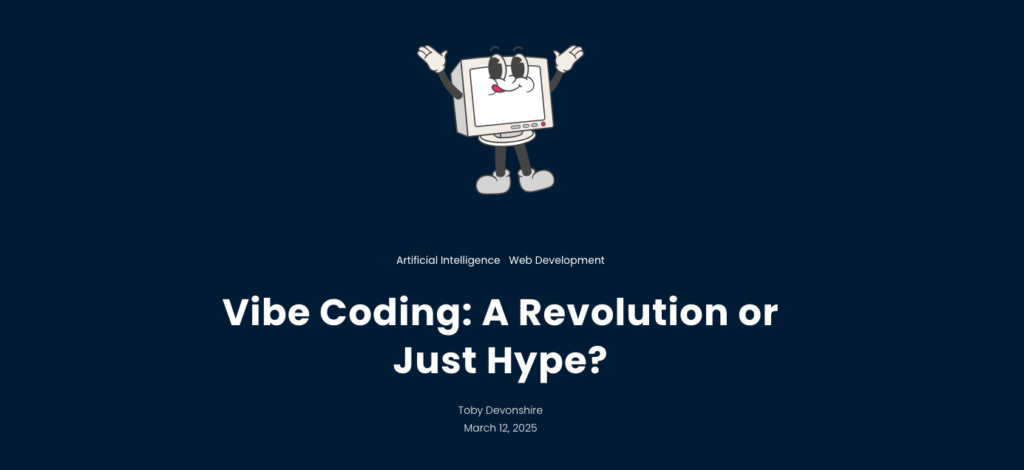If you’re new to the world of content marketing, it may seem difficult to know where to start with the content you produce – especially how long it needs to be.
Short-form content, like social media posts and quick videos, grabs attention instantly, while long-form content, such as in-depth blogs and case studies, builds trust and authority.
In this article, we look at the benefits and drawbacks of long-form and short-form content, and how to use these to your advantage in your marketing strategy.
What is short-form marketing content?
Short-form content consists of concise, easily digestible pieces that typically range from 300 to 1,000 words for written pieces, and under 60 seconds for video content. Types of short-form content include blog posts, social media posts, emails, infographics, and short videos like TikToks or Reels. Your brand’s short-form content should deliver punchy yet impactful messages that will capture the audience’s attention and encourage engagement without asking for too much effort from them.
As the pace of our digital landscape gets faster and our attention spans get shorter (just 8.5 seconds on average!), short-form content has never been more important to snag your audience. When used properly, short-form blog posts, social media carousels, and snappy videos can be digested and shared quickly and easily by users – making for quick results.

What is long-form marketing content?
As the name suggests, long-form content goes much more in-depth than its shorter counterpart to provide more comprehensive information about a topic.
Long-form content usually comes in the form of long-form blogs and videos, podcasts, case studies, and whitepapers. This content will usually be a minimum of 1,500 words for written pieces and ten minutes for audio and video content.
The purpose of long-form content is to establish a brand’s authority by educating or informing the audience on a topic. Longer-form content provides value to the reader by thoroughly covering topics and answering FAQs, to position the brand as an authority within the industry.
Despite requiring more time and effort from both the author and audience to create and consume, the rewards include higher engagement which leads to increased traffic and better SEO rankings, which all ultimately boost your brand’s credibility.

What are the benefits of creating short-form content?
As mentioned earlier, in a time where attention spans are slowing and marketers are having to work faster, short-form content is more relevant than ever. Alongside being fast and simple to create, distribute and share, there are several key benefits to using short-form content. These include:
Increased engagement rates
Users are more likely to consume and engage with short-form content, particularly with video content such as TikToks and Reels, which frequently gain traction including likes, comments, and shares on various social media platforms. Short-form video content will always have the potential to go viral, which can generate incredible results for brands.
By creating short-form social or video content, brands can engage with their audience in a more light-hearted, personal manner – there’s a reason Aldi, Ryanair, and Innocent all boast huge followings! – which allows you to ultimately build a better relationship with your customer base.
Quick and easy to produce
Compared to its longer counterpart, short-form content requires far less time and energy to create. This allows the marketer to release content more frequently without using too many internal resources, making for a more efficient content plan.
However, it is important to remember that quality should always take precedence, even when creating short-form pieces. Your main aim should be to create a consistent yet high-quality short-form content schedule.
Mobile-friendly
It’s estimated that 93% of the UK population use smartphones to access the internet, so it’s never been more important to ensure your content is optimised for mobile phones. Social media platforms including Instagram, X (formerly known as Twitter), and TikTok thrive on short, engaging content that delivers quick, impactful messages to users on the go.
Works well for paid ads
Short-form pieces are required for paid social and PPC campaigns, so it’s useful to nail your tone as concisely as possible to drive clicks and conversions. Effective short-form paid content ensures that those scrolling through search results or social media notice your ad and are encouraged to decide on the spot whether to take action.
Although it can provide an excellent advantage when catching a user’s attention, it’s important to remember that short-form content may lack depth and wil not necessarily build long-term authority. This is where longer-form content comes in.

What are the benefits of creating long-form content?
Long-form content requires more effort from the creator and the audience; however, the rewards can be significant. The benefits of using long-form content include the following:
Better for SEO
Longer content provides more opportunities to target keywords, boosting your site’s visibility on the SERP for your chosen terms. Although long-form content isn’t actively preferred by the algorithm, it’s important to keep in mind that the average content length for a Google first page result is 1,447 words.
As search engines tend to favour more in-depth and high-quality content, a well-written and thoroughly researched piece of long-form content is likely to rank higher on the SERP. This essentially means higher visibility and increased traffic to your website.
Builds authority
Customers will always want to purchase from brands who know what they’re talking about, and long-form content is the key to displaying this. Well-written, research-backed content demonstrating your industry knowledge will position your brand as an expert, making audiences more likely to trust your offering and return to your website.
Increased backlinks
High-quality long-form content doesn’t just build authority – it also attracts backlinks. By answering every question a user may have on your chosen topic, you can provide value, which decreases the likelihood of them searching for it elsewhere. Providing value to a user makes them more likely to share your content – whether that’s on social media or through references in their own blog or web content.
However, it’s important to remember that long-form content isn’t always appropriate for every platform and can require a lot of time and resources to produce. This is why we recommend an integrated content strategy for the best results.

Where do long-form and short-form content perform best?
Ideally, your marketing strategy should include a combination of short and long-form content to maximise traffic. You must understand where each content length will perform best to generate the best possible results.
Short-form content
Short-form content performs best when utilised appropriately for the following platforms:
- Social media: Short-form content provides quick engagement on platforms like Instagram, X, TikTok, Facebook, and LinkedIn.
- Blog posts: Short-form blog posts are perfect for trending topics and industry updates.
- Email marketing: If you want to grab attention, a snappy short-form email should do the trick.
- Short-form video content: Short-form video content performs well on social platforms like TikTok, Instagram Reels, and YouTube Shorts thanks to their instant shareability.
- Paid ads: Direct yet informative short-form ads drive quick engagement, increasing traffic to your website with little effort.
Long-form content
Long-form content can deliver fantastic results when used on the following platforms:
- Web content: Product or service pages that use long-form content create a sense of authority in your industry.
- Blog posts: Long-form blog posts tend to rank better on the SERP, providing lasting value to the brand and the user.
- Email marketing: Long-form newsletters can be effective for deepening audience relationships.
- Long-form video content: Longer videos perform well on YouTube when created for informational, educational, or storytelling purposes.
- Paid ads: Long-form ad copy can be extremely effective for high-ticket products and complex sales funnels.
Short vs. long-form content: Which is right for my business?
The best content marketing strategy will consist of a mix of short-form and long-form content utilised correctly.
Aim to create short-form content that attracts and engages new audiences, such as social media posts, paid ads, and video content. You will also need to create long-form content, such as in-depth blog posts, and case studies for SEO and authority-building, as this content will educate and nurture your audience.
Your long-form content should also be easily repurposed into short-form pieces – for example, a longer-form blog post could be broken down into social media snippets, infographics, and short videos to extend reach.
It’s important to test and analyse your performance, including engagement, traffic, and conversion rates, to optimise your strategy over time. By balancing content lengths and tailoring content to the audience and platform, you’ll see some great results.
At Blank Slate Digital, we create content marketing strategies that drive real traffic and engagement for brands in various industries. Whether you need short, snappy posts for paid ad campaigns or more in-depth SEO-optimised articles, we’ll help you create content that converts. Get in touch today to kickstart your content marketing journey!


